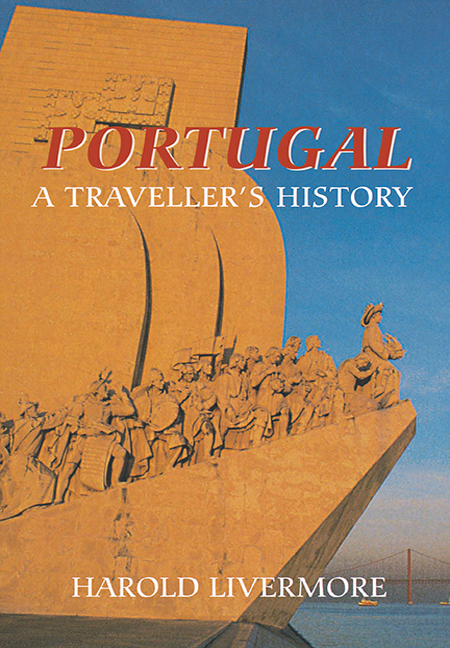Book contents
- Frontmatter
- Contents
- List of Illustrations
- Foreword
- 1 Introduction
- 2 Portugal in History
- 3 Before Portugal
- 4 Islamic Portugal
- 5 Architecture
- 6 Painting
- 7 Music
- 8 Birds
- 9 Fishing
- 10 Portuguese Wines
- 11 Lisbon
- 12 North from Lisbon
- 13 Oporto
- 14 North of Oporto
- 15 Interior Portugal
- 16 Alentejo
- 17 Algarve
- Afterword
- Index
- Frontmatter
- Contents
- List of Illustrations
- Foreword
- 1 Introduction
- 2 Portugal in History
- 3 Before Portugal
- 4 Islamic Portugal
- 5 Architecture
- 6 Painting
- 7 Music
- 8 Birds
- 9 Fishing
- 10 Portuguese Wines
- 11 Lisbon
- 12 North from Lisbon
- 13 Oporto
- 14 North of Oporto
- 15 Interior Portugal
- 16 Alentejo
- 17 Algarve
- Afterword
- Index
Summary
The name Portugal is indissolubly associated with that of Port-wine. Both words derive from the city of Oporto, which does not itself produce wine, but stores and exports the justly esteemed vintages of the Upper Douro valley, beginning some fifty miles to the east and continuing as far again to the Spanish frontier. It has enjoyed its reputation since the beginning of the eighteenth century and is still the most beautiful vineyard in the world. Port-wine became the country's leading export, and was widely consumed in Britain, serving even to restore the energies and spirits of university dons after the dispiriting exertion of teaching. Before 1680, the wine brought from Portugal was ‘Lisbon wine’, red or white. The change was due to a number of factors: the intermittent wars of England and France, which interrupted the trade in claret with Bordeaux; the Methuen treaty which stabilised the rates of duty; and the discovery of gold in Brazil, which made the ‘Portuguese trade’ eminently desirable. By then there were English merchants established in Oporto, and wine could be bought more advantageously there than in Lisbon. The wine obtained its unique quality by being ‘fortified’ with brandy, which strengthened it and made it keep better. Yet it was never more than a small proportion of Portugal's total production.
Even in 1930, port amounted to only 7 per cent of the total. Lisbon, the area between the ocean and the Tagus, had 20 per cent of all wine production, and Santarém, the Ribatejo, 15 per cent. Leiria, Braga and Viseu – the valley of the Dão – could also claim to exceed Oporto. Total Portuguese production ranked it with that of much larger countries: Italy, France, Spain and (for a time) Algeria. The vine is adaptable and now thrives almost everywhere. It prefers warm soil, with sufficient rain in the winter and spring, and a hot ripening-season. It does not like standing water, and though it flourishes on both banks of the Minho, it finds much of Spanish Galicia too wet. Nor does it enjoy tropical heat, such as is found in parts of the Alentejo. It has long been grown south of Lisbon at Palmela and Setúbal, and has more recently been extended into the eastern Alentejo round Évora.
- Type
- Chapter
- Information
- Portugal: A Traveller's History , pp. 74 - 76Publisher: Boydell & BrewerPrint publication year: 2004



